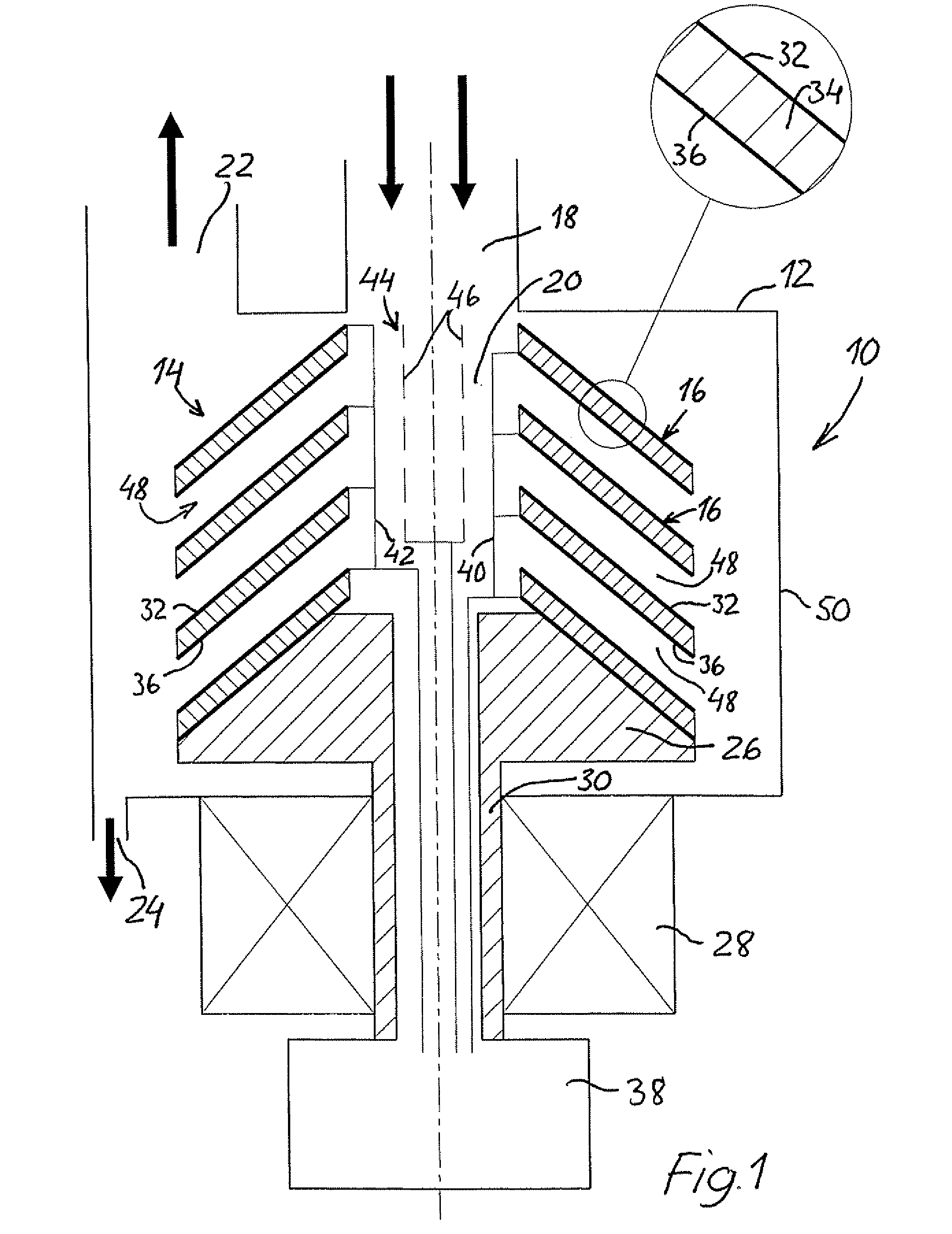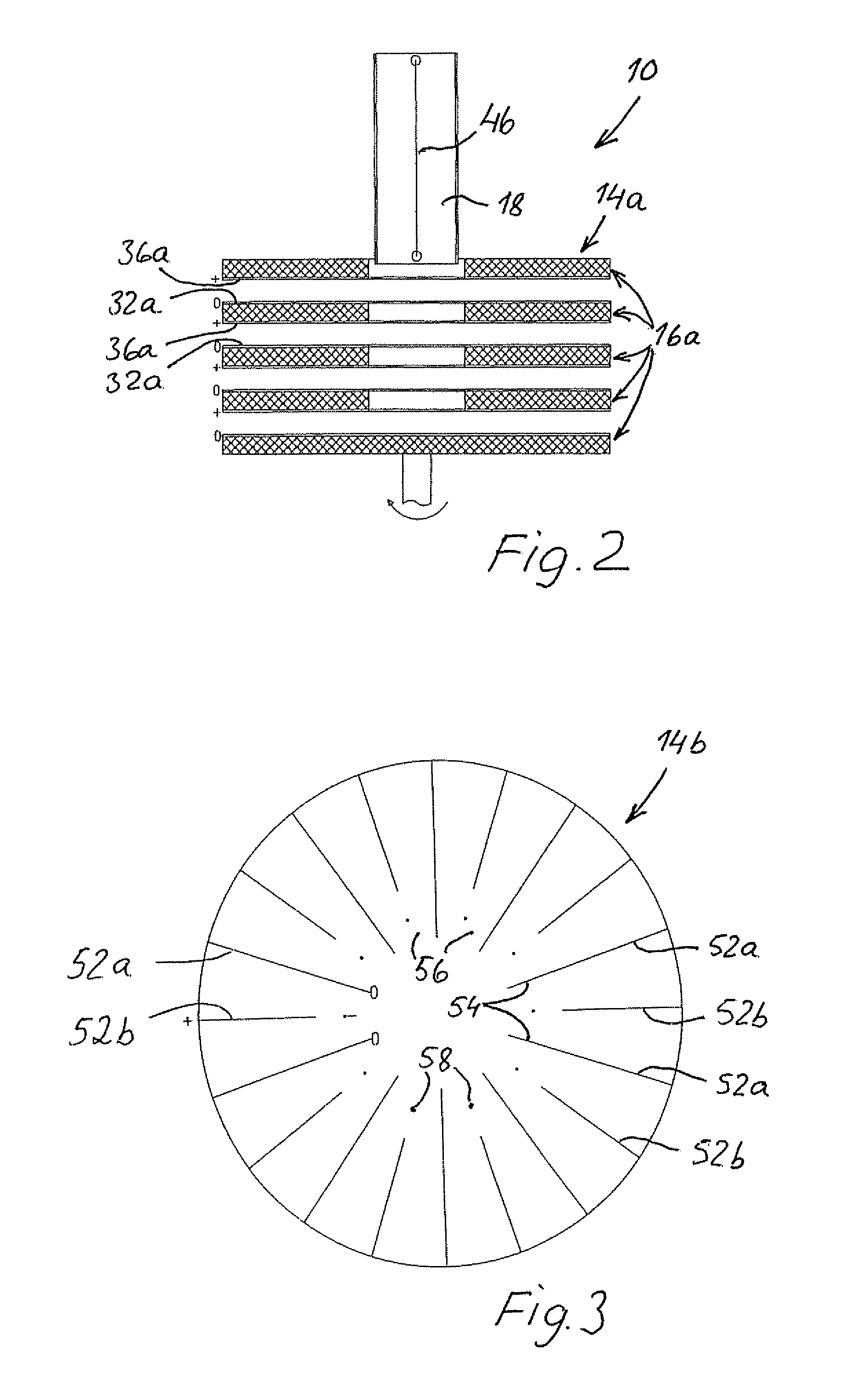Method and Apparatus for Separation of Particles From a Flow of Gas
a technology of gas flow and separation method, applied in the direction of separation process, electrode cleaning, centrifuge, etc., can solve the problems of ineffective limitations, and ineffectiveness of electrostatic filter or cleaner, and achieve the effect of improving efficiency and capacity
- Summary
- Abstract
- Description
- Claims
- Application Information
AI Technical Summary
Benefits of technology
Problems solved by technology
Method used
Image
Examples
Embodiment Construction
[0018]In FIG. 1, a first embodiment of a centrifugal separator according to the invention is indicated in general by the reference numeral 10, which centrifugal separator is intended to separate off electrostatically-charged, solid and / or liquid particles in a flow of gas by means of the simultaneous, combined effect of electrostatic attraction forces and centrifugal forces. The separator 10 comprises a stationary casing 12, in which a rotor 14 is mounted in such a way that it can rotate, which rotor has a plurality of sedimentation surface elements mounted on it in the form of a stack of concentric, conical, plate-shaped elements, so-called insert plates 16, the construction of which will be described in greater detail below. The casing 12 has an inlet 18 for the gas that is to be cleaned. The inlet 18 opens out concentrically into a central inlet shaft 20 in the rotor 14. The casing 12 has, in addition, an outlet 22 for the gas that has been cleaned in the centrifugal separator 10...
PUM
| Property | Measurement | Unit |
|---|---|---|
| voltage | aaaaa | aaaaa |
| electrical field | aaaaa | aaaaa |
| electrical potential | aaaaa | aaaaa |
Abstract
Description
Claims
Application Information
 Login to View More
Login to View More - R&D
- Intellectual Property
- Life Sciences
- Materials
- Tech Scout
- Unparalleled Data Quality
- Higher Quality Content
- 60% Fewer Hallucinations
Browse by: Latest US Patents, China's latest patents, Technical Efficacy Thesaurus, Application Domain, Technology Topic, Popular Technical Reports.
© 2025 PatSnap. All rights reserved.Legal|Privacy policy|Modern Slavery Act Transparency Statement|Sitemap|About US| Contact US: help@patsnap.com



